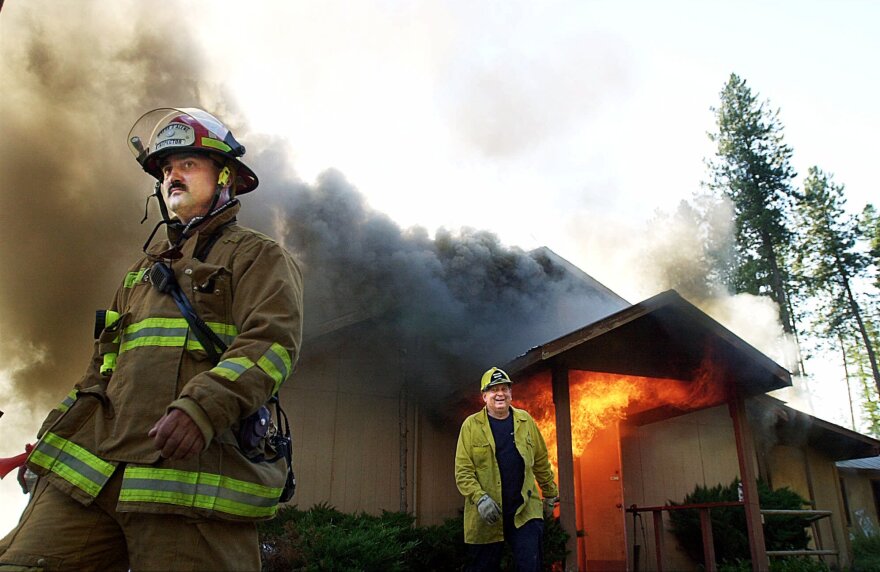It didn’t take him long to manifest his dream of a “white homeland” in Kootenai County. Richard Butler, an aeronautical engineer, moved with his wife, Betty, from California to Hayden Lake, Idaho in 1973.

Nestled among trees of the north Idaho countryside, Butler established the Church of Jesus Christ Christian four years later, along with the Aryan Nations, his infamous group that eventually drew more than 100 white supremacists to north Idaho each year to promote his message of hate and intolerance.
Others heard that call and flocked to learn more about Butler – those like Robert J. Mathews. Eventually, Mathews and others splintered off from Aryan Nations, forming a violent faction known as The Order.

A federal court found members of this new group assassinated a Denver-based, Jewish radio host, bombed a synagogue, robbed banks and stole millions from armored cars during the 1980s before Mathews burned to death during a shootout with FBI agents at Whidbey Island, Washington.
None of this could be pinned on Butler, nor was he convicted of a charge from 1987 in Arkansas that accused him of trying to overthrow the government.
Aryan Nations gatherings eventually spilled over onto the streets of nearby Coeur d’Alene, with the parade of blood red Nazi flags contrasting the cerulean blue lake a few blocks away from Sherman Avenue. A death rattle would soon be heard, though.

Armed guards at the Hayden Lake compound shot at Victoria Keenan and her son, Jason, one night in 1998. Guards claimed they heard gunshots coming from the direction of the Kennans’ car.
They eventually forced the mother and son into a ditch and assaulted them, according to the Southern Poverty Law Center, which took up the Keenans’ case. The family won a $6.3 million judgment against Butler and others in court, which came in the form of the 20-acre compound.

The guard tower, church and several other buildings were dismantled – many were burned in training exercises conducted by local fire departments. It’s now owned by North Idaho College, which turned the property into a “peace park” in an attempt to radiate a brighter message than the one of hate that persisted for decades.
Butler later lived in a house purchased by one of his followers and continued his white supremacist rallying cry -- this time through the internet. He campaigned for mayor of Hayden in 2003, but lost by thousands of votes, according to the New York Times. He died of natural causes the following year.
This story is part of KBSX's news series "Legacy Of Hate."
Copyright 2017 Boise State Public Radio









